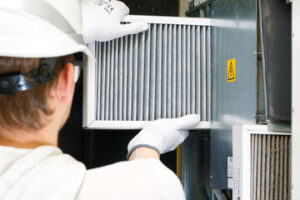A heat furnace is a crucial component in modern heating systems, playing an essential role in maintaining comfortable indoor temperatures during cold weather. Its primary function is to generate and distribute heat throughout a building, ensuring that the indoor environment remains warm and comfortable even in extreme weather conditions.

Over the years, heat furnaces have evolved significantly, incorporating advanced technology and improved energy efficiency to meet the growing demand for reliable and cost-effective heating solutions. Understanding how a heat furnace works, the different types available, and the importance of maintenance can help homeowners and building managers make informed decisions about heating systems and optimize their performance for long-term comfort and savings. Contact Mr. Heat Furnace Orillia for professional help.
A heat furnace operates by generating heat through the combustion of fuel or the use of electricity and then distributing the heat through a network of ducts, radiators, or underfloor heating systems. The process begins when the thermostat detects that the indoor temperature has dropped below the set point. This signals the furnace to activate and start the heating cycle. In gas or oil-fired furnaces, fuel is burned in a combustion chamber, generating heat. The heat is then transferred to a heat exchanger, where it warms the air or water that is circulated through the heating system. In electric furnaces, heating elements are used to generate heat, which is then distributed through the ducts or radiators. The warmed air or water is pushed through the system by a blower or pump, ensuring that heat is evenly distributed throughout the building. Once the desired temperature is reached, the furnace cycles off until the thermostat detects that additional heating is needed.
The efficiency of a heat furnace is measured by its annual fuel utilization efficiency (AFUE) rating, which indicates how effectively the furnace converts fuel or electricity into usable heat. A higher AFUE rating means that the furnace converts a greater percentage of the energy it consumes into heat, reducing energy waste and lowering operating costs. Modern furnaces are designed to achieve high AFUE ratings, often exceeding 90% efficiency. This means that only a small percentage of the energy consumed is lost through exhaust gases or heat loss. High-efficiency furnaces use advanced components such as secondary heat exchangers, variable-speed blowers, and sealed combustion chambers to maximize heat output and minimize energy waste. Choosing a furnace with a high AFUE rating can result in significant energy savings over the lifespan of the heating system, making it a cost-effective investment for homeowners and building managers.
There are several types of heat furnaces available, each with distinct advantages and applications. Gas furnaces are among the most common types, using natural gas or propane as a fuel source. They are known for their quick heating capabilities and relatively low operating costs, making them a popular choice for residential and commercial buildings. Oil furnaces are another option, particularly in areas where natural gas is not readily available. Oil furnaces require regular fuel deliveries and maintenance to ensure proper operation, but they are capable of producing high levels of heat output, making them suitable for colder climates. Electric furnaces, on the other hand, use electric resistance coils to generate heat. While electric furnaces tend to have higher operating costs due to the price of electricity, they are highly efficient and easy to install, making them a practical choice for smaller buildings or as supplemental heating systems. Heat pumps are also gaining popularity as an alternative to traditional furnaces. They work by extracting heat from the air or ground and transferring it into the building, providing both heating and cooling functions. Although heat pumps are more energy-efficient than traditional furnaces, their performance can be affected by extreme cold temperatures, which may require the use of a backup heating source.
Proper installation and maintenance are essential for ensuring that a heat furnace operates efficiently and reliably. A poorly installed furnace can result in uneven heating, increased energy consumption, and frequent breakdowns. Professional installation by a qualified technician ensures that the furnace is correctly sized for the building, that all components are properly connected, and that safety measures are in place to prevent issues such as carbon monoxide leaks or electrical hazards. Once installed, regular maintenance is necessary to keep the furnace running smoothly and to prevent costly repairs. Maintenance tasks include inspecting and cleaning the heat exchanger, checking the ignition system and burners, lubricating moving parts, and replacing air filters. Dirty or clogged air filters can restrict airflow, forcing the furnace to work harder and increasing energy consumption. Replacing filters regularly ensures that the furnace operates at peak efficiency and maintains consistent heating performance.
Air quality is another important factor influenced by the performance of a heat furnace. Furnaces with high-quality air filters and ventilation systems can help remove dust, allergens, and pollutants from the indoor air, creating a healthier environment for occupants. High-efficiency particulate air (HEPA) filters are capable of capturing small particles and improving overall air quality. Some furnaces are equipped with UV light purifiers or electrostatic filters that can eliminate bacteria, viruses, and mold spores, further enhancing indoor air quality. Maintaining proper humidity levels is also essential for comfort and health. Dry indoor air can cause respiratory issues, dry skin, and static electricity, while excessive humidity can promote mold growth and create an uncomfortable environment. Furnaces with integrated humidifiers and dehumidifiers allow users to control humidity levels, improving overall comfort and air quality.
Zoning systems are an effective way to improve the efficiency and performance of a heat furnace. Traditional furnaces use a single thermostat to regulate the temperature of an entire building, which can lead to uneven heating and energy waste. Zoning systems divide a building into separate zones, each with its own thermostat and control settings. This allows users to customize the temperature in different areas based on occupancy and preference, ensuring that heat is delivered where it is needed most. Zoning systems use dampers in the ductwork to direct airflow to specific areas, reducing energy waste and improving comfort. For example, a zoning system can maintain a higher temperature in the living room during the day while keeping bedrooms cooler, resulting in more efficient energy use and lower heating costs.
Advances in technology have led to the development of smart thermostats and building automation systems that enhance the performance and convenience of heat furnaces. Smart thermostats allow users to program heating schedules, adjust settings remotely, and receive real-time updates about system performance. Some smart thermostats use learning algorithms to analyze usage patterns and make automatic adjustments to improve efficiency and comfort. Building automation systems integrate heating controls with other building systems, such as lighting and security, to create a responsive and energy-efficient environment. Sensors and data analysis enable the system to make real-time adjustments based on occupancy, outdoor weather conditions, and user preferences, optimizing furnace performance and reducing energy consumption.
The future of heat furnace technology is focused on improving energy efficiency, reducing environmental impact, and increasing user convenience. Innovations such as condensing furnaces, which use a secondary heat exchanger to capture and reuse heat from exhaust gases, are helping to achieve higher AFUE ratings and reduce energy waste. Renewable energy sources, such as solar and geothermal, are also being integrated into furnace systems to reduce reliance on fossil fuels and lower carbon emissions. Hybrid systems that combine heat pumps with traditional furnaces offer the flexibility to switch between heating sources based on outdoor temperatures and energy costs, maximizing efficiency and comfort. Research and development in materials science and engineering are leading to the creation of more durable and lightweight components that improve furnace performance and reduce maintenance requirements.
A well-maintained and properly installed heat furnace is essential for creating a comfortable and energy-efficient indoor environment. Understanding the different types of furnaces, their operating principles, and the factors that influence their performance allows homeowners and building managers to make informed decisions about heating systems. Regular maintenance, high-quality air filters, zoning systems, and smart controls can further enhance furnace performance and reduce energy costs. As technology continues to evolve, heat furnaces will become even more efficient and environmentally friendly, providing reliable and cost-effective heating solutions for modern living.
